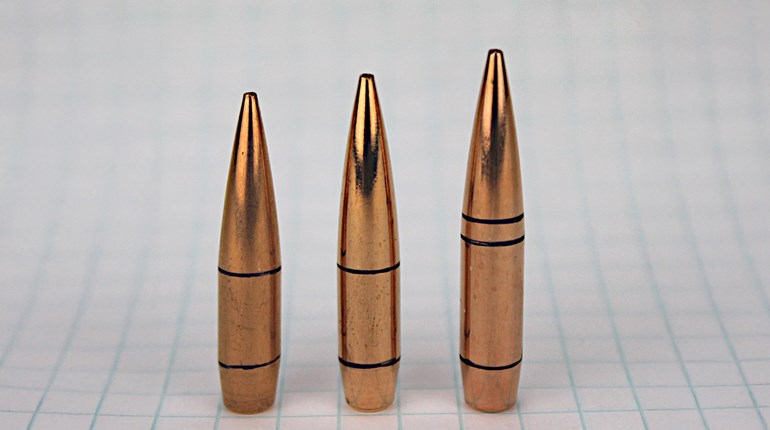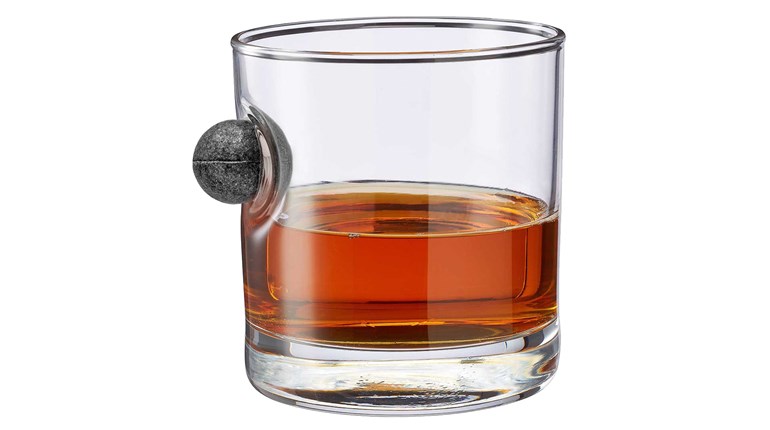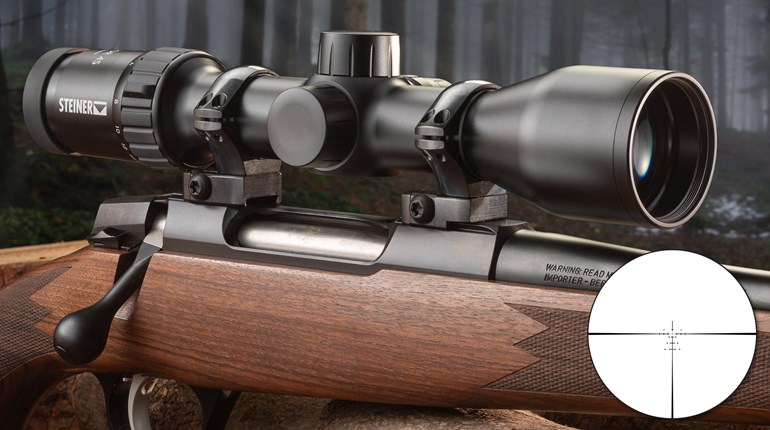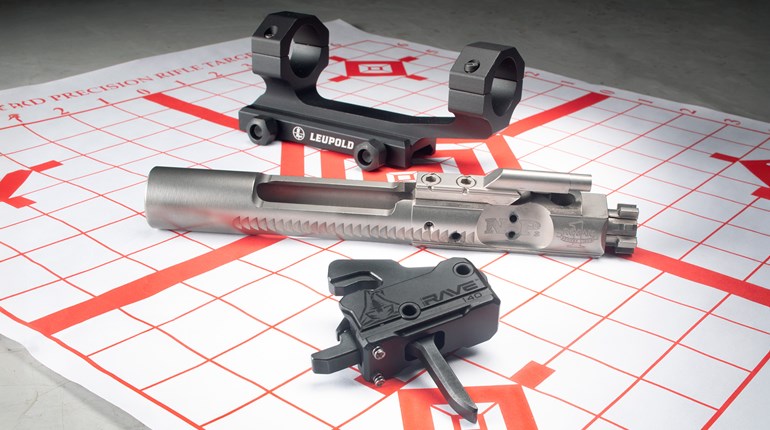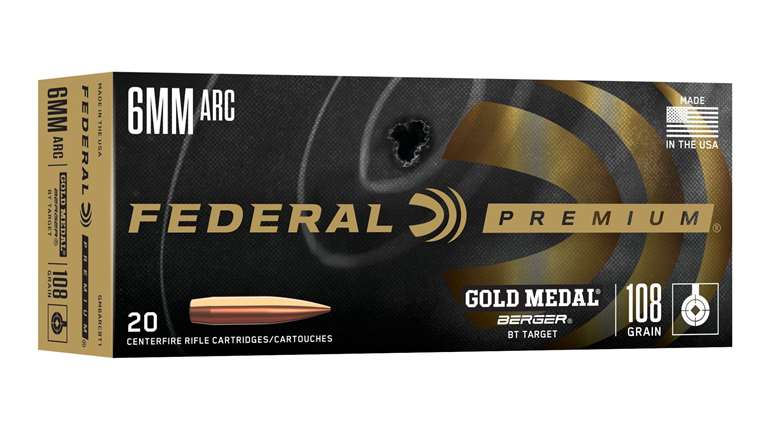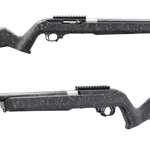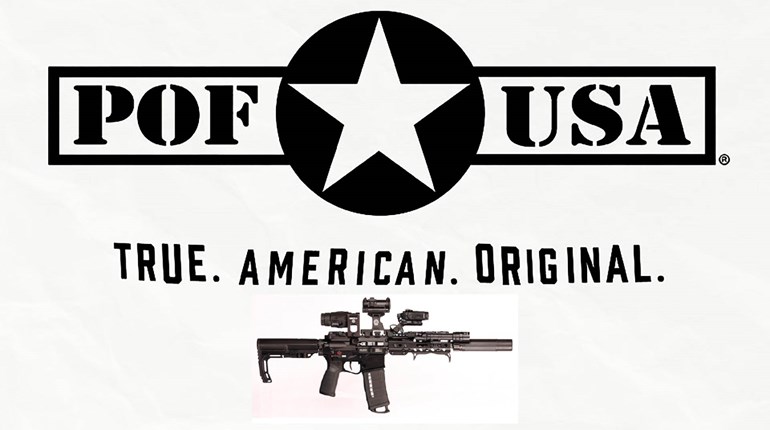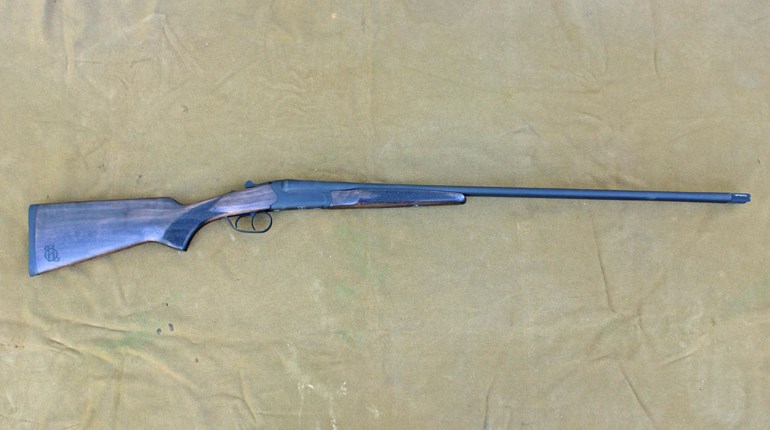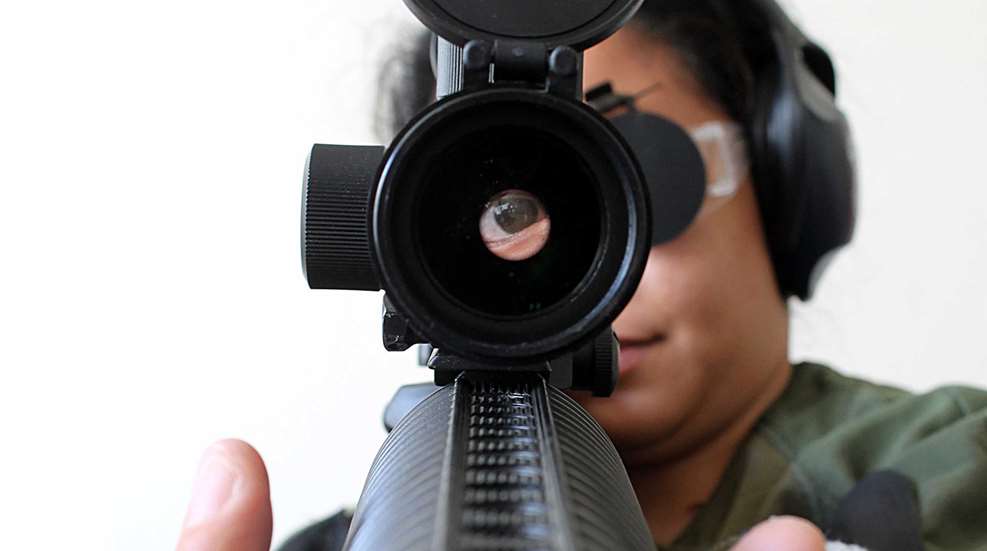
The 2016 rule change permitting optics for High Power Service Rifle competition presents us with a limited choice for dedicated scopes at present. However, the pertinent rule parameters―a magnification no greater than 4.5x and a maximum objective lens diameter of 34mm―means that, though not dedicated specifically to the Service Rifle and High Power competition, we do have some off-the-shelf candidates.
What’s out there?
I wore out quite a bit of shoe leather at SHOT Show 2018 in January checking rifle scope manufacturers’ offerings that might serve us immediately. SHOT Show was a great opportunity to examine plenty of scopes and get from company representatives face-to-face answers to questions regarding their scope features. Many of them were very interested in learning our specific needs, with an eye toward the possibility of eventually making dedicated Service Rifle scopes.
As you can imagine, one major concern among scope manufacturers is whether the high power competition niche presents enough potential market income to warrant the cost of engineering and producing scopes for such a limited purpose. You know the tune, one we all sing: “Can I earn enough income from [fill in the blank] to risk the investment of time, effort and money?”
Likewise, high power shooters must consider which appropriate scope is within their means. We now face the reality that, unless we intend to go up against another competitor’s scope magnification advantage using only iron sights, we have to spend significant money on a scope and a new flat top AR-15 upper to accommodate it. It seems inevitable that shooters competing for Distinguished points may eventually be forced to go to a scope to have any hope of making the cutoff in an EIC match―or even to be competitive.
Scope features
Before plunking down money for a new upper and scope, it’s wise to ask what features we really need in a Service Rifle scope. Input from shooters already using scopes show our basic, must-have, no-compromise needs appear to be:
- Finger adjustable windage and elevation turrets with positive clicks.
- A reticle center that does not cover the target (subtend) such that we can no longer see the black.
- A minimum of ½ MOA adjustments.
- A cantilever or other scope mount for flat top receivers that permits moving the scope further forward for proper eye relief (and/or a length-adjustable butt stock).
In addition to those must-haves, we also have a serious need for:
- ¼ MOA adjustments.
- Turret markings visible without needing to dismount the rifle from the shoulder.
- Variable power, and with that we also must have:
- Parallax adjustment.
After those we can add:
- Illuminated reticle.
- A variety of reticles to choose from, such as a circle or “horseshoe” reticle that precisely encircles the black area of the target; mil or rad dots; or fine, duplex or dot crosshairs.
Your own personal priorities may rearrange and perhaps add to this list, but this is a fairly inclusive generalization and a place from which manufacturers and shooters can start deliberations.
Circles and dots
Regardless of design, non-illuminated reticles present us with a black-on-black situation, a black reticle on a black bullseye. While perhaps not a factor to long-time Long Range shooters who opt for optics, an illuminated reticle has obvious advantages. A disadvantage is, of course, that these reticles (with the exception of fiber optics) are electronic and require battery power, an extra invitation to Murphy to accompany us to the firing line. Opinions on what makes the best reticle design―fine crosshair, duplex, center dot, or others―vary widely; in the end, what’s best is what works best for you, but there are a few considerations universal to all shooters. Perhaps most important is how the reticle subtends the target.
Official NRA target dimensions are listed on pages 14-15 of the NRA High Power Rifle Rules. As you know, the targets at 200, 300 and 600 yards vary in physical size; so do the diameters of the black aiming areas (about 6 MOA across at any specific distance), but the black is the same apparent size regardless of distance. Targets reduced for 100-yard competition (SR and MR targets) also appear to have the same visual subtension. There’s an obvious appeal in a scope with a center reticle of either circular or horseshoe shape that closely encircles the black.
Focal plane
Without getting bogged down in a different discussion, in a variable power scope the reticle must be mounted in the second focal plane (on a lens behind the magnifying lens), or else the reticle appears to get larger as we step up magnification. While this may not be a problem with a fine crosshair reticle, a first focal plane dot reticle or some other configuration could be a deal killer because the subtension of the dot, or whatever is in the scope center, gets larger as we increase magnification. At some point, the dot can completely cover the aiming black.
Parallax, another separate boggy discussion, isn’t a terribly serious issue in hunting at conventional distances, but when moving back to 600 yards in high power competition, a small error in head placement behind the ocular lens can throw shots out of the X-ring. Some scope shooters jerry rig a solution by drilling a small hole in the ocular lens protective plastic cap and leave it in place on the lens to help assure consistent head placement, but the real fix is to build a parallax adjustment into the scope. To date, only the Hi-Lux XTC includes a parallax adjustment specifically for 100-, 200-, 300- and 600-yard competition.
BDC (bullet drop compensator) type reticles may or may not be useful to the individual shooter; they would not seem so for the scopes with circle or horseshoe center reticles. When we consider we have both finger-turn turret adjustments and our sight dope to allow us to hold center X at any distance, a BDC for many would be an unnecessary cluttering of the sight picture―and another invitation to Murphy should we forget to use the BDC holdover when moving back. Also, BDCs are set for ammo of very specific performance, and any other ammo would likely impact higher or lower, negating the BDC’s purpose.
Dedication
Before we get to candidate scopes that came to SHOT Show 2018, let’s briefly mention the dedicated few. Hi-Lux is among the first to bring out a new, dedicated high power scope along with the rule change, for about $475; we’ll be taking a closer look at the Hi-Lux and running it through a few matches for a more detailed report later. Jim Owens, a name well-known among Service Rifle shooters, is also among the first, offering the Bresser Condor for $325. One may argue the Condor is not entirely dedicated to high power, as it lacks the adjustable parallax feature, but Owens says it was purpose-built for the 2016 High Power rule change, nonetheless. Like those that accompany it in our list, the Condor possesses the other features desirable for across-the-course high power competition―and the price includes a mount.
Those are the scopes dedicated to the Service Rifle shooter. Doubtless, there are a few candidate scopes I missed at SHOT or that didn’t appear there. Several other scope makers at SHOT who did not make our list brought scopes that fell within rule parameters and had many desirable features, but the models lack finger adjustable turrets, sporting ordinary coin-slot adjustments. If you can imagine trying to adjust your windage with a coin while dealing with a squirrely wind and the clock ticking, then you understand the must-have requirement for finger adjustments and why we excluded those lacking them.
We can expect other major manufacturers to eventually bring us more offerings in the future, but we do have some choices right now that, though not designed from the get-go for Service Rifle high power competition, still have features that will suit our needs for the present.
Perfect? Maybe not. But good enough for competition? That’s something only you can determine for yourself, and we’ll examine a few of these candidate scopes here as we go through the learning curve of switching from irons to optics in high power. They may serve your purpose for now―or perhaps even indefinitely.
Scoping out scopes
The sampling of scopes listed here conform to NRA and CMP High Power rules. You can also view them all in the gallery at the top of this article. [Editor’s note: We would be remiss not to include Leupold’s new scope for High Power rifle shooters that debuted after SHOT Show, the VX-4.5HD. Read more about this new Service Rifle optic.]
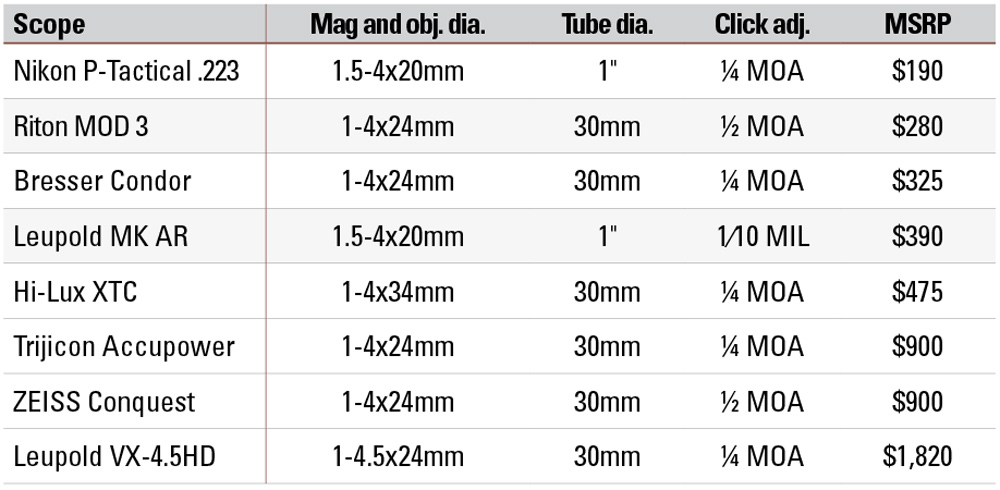
Of them, only the Hi-Lux XTC has a parallax adjustment specifically for high power competition. All have external finger adjustment windage and elevation knobs (that may be a model option). The Nikon does not have an illuminated reticle offering.
Read more about High Power Rifle competition:













